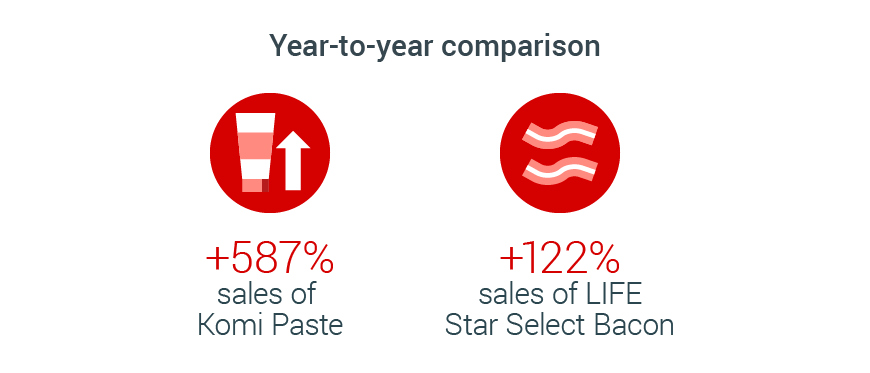- Japan’s #1 seasoning manufacturer, Ajinomoto Co., Inc., used targeted video ads to increase in-store presence of Komi Paste, one of its flavor paste products, at specific retail chains.
- In partnership with Dentsu, the brand used TrueView spots to promote easy online recipes using Komi Paste.
- Video ads targeted consumers that fit a specific demographic profile and lived near retail chain stores.
- In-store sales materials also showed how Komi Paste could be used with other grocery items the partner retail chain wanted to promote.
- Year-over-year sales of Komi Paste increased by nearly 600%, and sales of companion products rose by 122%.
For manufacturers in Japan, retail stores are absolutely indispensable to business. They’re the most important and influential touch points where consumers can physically interact with and examine products before buying them.
But simply creating appealing products, achieving household-name status, or producing frequent TV advertising is no longer enough to guarantee a company’s products will enjoy prime shelf space or “featured product” status. So it’s essential to come up with new ideas for bringing these products to market and finding ways to earn support from retailers.
Combining consumer needs with specific retail priorities
Japan’s leading seasoning manufacturer Ajinomoto Co., Inc. experimented with a new approach to this challenge when it came to the promotion of its seasoning Cook Do® Komi Paste. The company partnered with Japan’s biggest advertising agency, Dentsu, to develop an online video advertising campaign that was completely different from previous TV advertising or promotional campaigns.
Dentsu also established three key ideas for the project: align with consumer needs, align with retail needs, and align with target areas.
Align with consumer needs
Ajinomoto and Dentsu capitalized on the growing demand for recipe videos with video ads that showed Komi Paste being used in actual recipes. The goal was to increase consumer understanding of Komi Paste’s key selling point—that it can be used in a variety of recipes—as well as the fact that it’s easy to use, saves time, and can be used on its own without other seasonings.
Align with retail needs
Dentsu and Ajinomoto worked with grocery retailers to find out which products they wanted to sell and the times each of those products were going to be promoted. Then, they created videos of sample menus and recipes using Komi Paste alongside those products. Sales promotions for those related products and Komi Paste were then set up as companion in-store marketing tools.
Align with target area
Ads were targeted based on the location as well as consumer audience segments of the participating stores. Targeting at this level isn’t possible on TV or most other traditional mediums, which helped establish YouTube as the right place for the campaign. Ultimately, Ajinomoto and Dentsu created videos specifically for nine different retailers.
Ajinomoto’s success spreads to other brands
Following the launch of the video campaign, supermarket chain LIFE’s sales of Komi Paste shot up by 587% when compared with the previous year’s sales. Sales of LIFE Star Select Bacon—the companion product the supermarket chain featured in recipes with Komi Paste—also rose by 122% over the previous year’s figure.
The response within the retail industry to this sales promotion has been overwhelmingly positive. A second round of video creative is slated for nearly all nine retailers from the pilot version of the campaign, and there are plans to further capitalize on the momentum by expanding the campaign to cover even more retail stores.

It’s becoming increasingly vital for both manufacturers and advertising agencies not only to convey product benefits to consumers but also to generate buzz at retail stores where consumers actually come into contact with the products. Developing marketing techniques that recognize the demands of consumers as well as the needs of the chosen retail channels is crucial to achieving this goal. The Komi Paste campaign is a powerful reminder that new solutions can come from an innovative use of existing digital advertising methods in addition to adopting new marketing technology.






